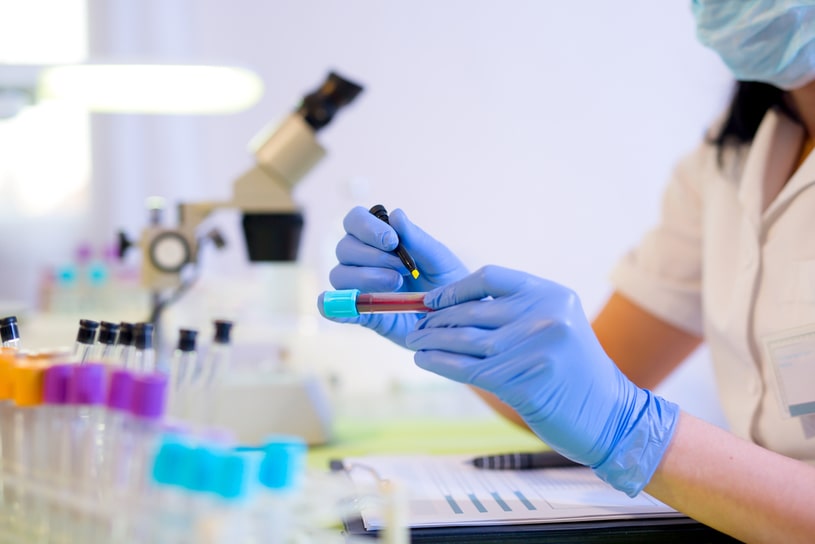LSD has a short half-life, affecting how long the drug is detectable in the system through different tests like – saliva, hair, urine, and blood samples. Compared to other drugs, acid can be harder to detect because it is quickly broken down in the user’s liver. Factors like age and weight also tend to show varying test results for how long Acid stays in the system.
The doses of drugs are decided separately for different individuals.
Table Of Contents:
The dangers of LSD should be kept in mind because even a single dose of the drug can cause serious mental changes. After a drug is consumed, its duration in the system is greatly impacted by several factors, including the dosage, administration route, and purpose of use. Specific testing assays are performed for its detection in the system.
How Long Does LSD Stay In Your System?
It is one of the most controversial psychedelics. Used for recreation or spiritual journeys, the drug usually clears out of the system as soon as its effects wear off.
- It leaves the system of the user within 15-28 hours
- There won’t be any signs of LSD or its metabolites about 24-36 hours after intake
- People believe that a small amount of Acid can stay in your spinal cord forever. However, no scientific data can back up this myth
LSD Detection Window For Urine, Blood, And Saliva
Standard LSD drug test can’t detect the drug. Although some organizations have strict policies, specialized tests are not as common as they’re too expensive. Usually, cut-off levels are set low.
How Long Does Acid Stay In The Urine?
Urinalysis can reveal its use. LSD and 2-oxo-3-hydroxy LSD can be detected as soon as 3 hours after intake, for up to 2-5 days.
How Long Does Acid Stay In The Blood?
Blood tests can also be used; the drug can be detected for up to 3-12 hours. As this is a short period, blood tests are not very reliable.
Various techniques can be applied:
- Radioimmunoassay (with a cut-off level of 0.5 ng/ml)
- Enzyme-Linked Immunosorbent Assay
- High-Performance Thin-Layer Chromatography
- Gas Chromatography/Mass Spectrometry
How Long Does Acid Stay In The Hair?
LSD drug tests through hair are uncommon. However, hair tests provide a long window of detection – up to 90 days.
How Long Does Acid Stay In The Saliva?
Swab LSD drug tests are also uncommon, and as the drug doesn’t show on standard saliva tests, there are no precise data.
Although it might clear from the system quickly, remember that it can lead to flashbacks and mental disorders.
What Is LSD Half-Life?
Although it was accepted that LSD’s half-life is 2.45 hours, recent research shows it’s over 5 hours. Taking this into account, it needs approximately between 15 and 28 hours to leave the user’s system. Since then, its withdrawal symptoms may take place.
With a plasma half-life of 2.5-5 hours, the effects can be felt 10 minutes after injecting the drug and 20-90 minutes after taking it orally. The effects may last for up to 6-12 hours.
How Is Acid Metabolized?
The metabolism rates also affect its duration and elimination. It is absorbed by the gastrointestinal tract and reaches peak levels within 10-15 minutes.
It is metabolized by the liver (by the CYP450 enzyme) and breaks into many mostly inactive metabolites: O-H-LSD, LAE, and 14-hydroxy-LSD.
Note that 2-oxy-3-hydroxy-LSD can’t be detected in the blood, but it’s the most prominent metabolite in the urine used to detect its intake. Also, this metabolite has a longer half-life. Only 8% of it passes out via urinary excretion.
The processes after injecting it are similar. However, injecting the drug leads to rapid absorption.
What Factors Influence Its Elimination Period?
Several factors affect a drug’s ability to leave the body. Like any other drug, the effects of Acid, its duration, amount, and elimination depend on factors such as:
- Dosage: Most users take between 40 and 500 mcg. In fact, 100 mcg LSD can be detected via radioimmunoassay at around 30 hours. This time is prolonged for larger doses.
- Purity: The purity of the product also affects the elimination of the drug. Analogs can lead to variations in duration and disposal. Also, the way it has been stored also affects it.
- Individual differences: Age, weight and other personal characteristics influence the effects of its intake. For instance, people over 65 process it at a slower pace.
- Lifestyle: Our diet can influence the effects Acid has on us. It’s believed that acidic meals lead to quicker elimination. What’s more, taking Acid on an empty stomach can lead to more intense effects. Regular exercising and staying hydrated are some of the factors that can help users clean their system (supplements are also helpful).
- Genetics: Due to the enzymes involved in the metabolism, some genetic differences can also affect how it is cleared from the system.
- Health conditions: The overall health of the user also influence the effects of the drug. Usually, renal and liver damage can lead to difficulties with the elimination process.
- Polydrug abuse: Note that mixing drugs can lead not only to prolonged elimination but overdose and severe side effects.
Can Drug Tests Detect Dots?
Standard LSD test kits can’t detect it. However, some more advanced and expensive techniques can identify the drug. Note that usually the cut-off levels are set low. Urinalysis can find Acid for up to 2-5 days and in the blood for up to 3-12 hours. Hair and swab LSD drug tests are uncommon when it comes to the detection of Acid.
Staying Safe
Although it’s not likely to remain in the body for as long as other drugs, acid use can still have harmful consequences. Monitoring the Future (MTF) data for 2003 show that the rate of previous year usage for LSD in the twelfth graders (1.9%) was greater as compared to the rates of use within the eighth graders (1.3%) or young adults (1.2%).
If one is worried regarding drug testing or the effects of acid, limit its intake right away as it affects the mind and body significantly for at least 12 hours after a dose. It may even result in an adverse effect on the user’s ability to function normally at home, school, or work.
If a person or their loved one requires assistance, if LSD side effects have been noticed, consult a specialized physician for the alternatives. Treatment approaches may include outpatient or inpatient rehab that focuses on individual counseling, group therapy, and family therapy.
There are no FDA-approved drugs used in the treatment of its use.
However, the doctor may prescribe medications to help treat symptoms of other psychiatric conditions, including depression and anxiety, advise on what to do in case of an overdose of LSD, and tell you how to stop using it.
In case of dealing with LSD issues in the system, dial up the emergency helpline 911 to receive immediate assistance and careful evaluation.
Page Sources
- Baquiran M, Al Khalili Y. Lysergic Acid Diethylamide Toxicity. [Updated 2020 May 4]. In: StatPearls [Internet]. Treasure Island (FL): StatPearls Publishing; 2020 Jan, https://www.ncbi.nlm.nih.gov/books/NBK553216/
- Patrick C. Dolder, Yasmin Schmid, Andrea E. Steuer, Thomas Kraemer, Katharina M. Rentsch, Felix Hammann, and Matthias E. Liechticorresponding. Pharmacokinetics and Pharmacodynamics of Lysergic Acid Diethylamide in Healthy Subjects. Clin Pharmacokinet. 2017; 56(10): 1219–1230. https://www.ncbi.nlm.nih.gov/pmc/articles/PMC5591798/
- COUPER, Fiona J. and LOGAN, Barry K, Drugs and Human Performance Fact Sheets, April 2014 (Revised), https://www.nhtsa.gov/sites/nhtsa.dot.gov/files/809725-drugshumanperformfs.pdf
- Ian Joyce, A Comparative Literature Survey of Psilocybin and LSD-25 Metabolism, 2017, https://broncoscholar.library.cpp.edu/bitstream/handle/10211.3/193166/JoyceIan_LibrarResearchPaper2017.pdf
- Passie T, Halpern JH, Stichtenoth DO, Emrich HM, Hintzen A. The pharmacology of lysergic acid diethylamide: a review. CNS Neurosci Ther. 2008, https://www.ncbi.nlm.nih.gov/pmc/articles/PMC6494066/
- Garza AZ, Park SB, Kocz R. Drug Elimination. [Updated 2020 Jul 27]. In: StatPearls [Internet]. Treasure Island (FL): StatPearls Publishing; 2020 Jan, https://www.ncbi.nlm.nih.gov/books/NBK547662/
- Hadland, Scott E, and Sharon Levy. “Objective Testing: Urine and Other Drug Tests.” Child and adolescent psychiatric clinics of North America vol. 25,3 (2016): 549-65, https://www.ncbi.nlm.nih.gov/pmc/articles/PMC4920965/
- US Department of Justice, LSD Trafficking and Abuse, Sept 2004, https://www.justice.gov/archive/ndic/pubs11/11379/11379p.pdf

 Authored by
Authored by  Reviewed by
Reviewed by 


